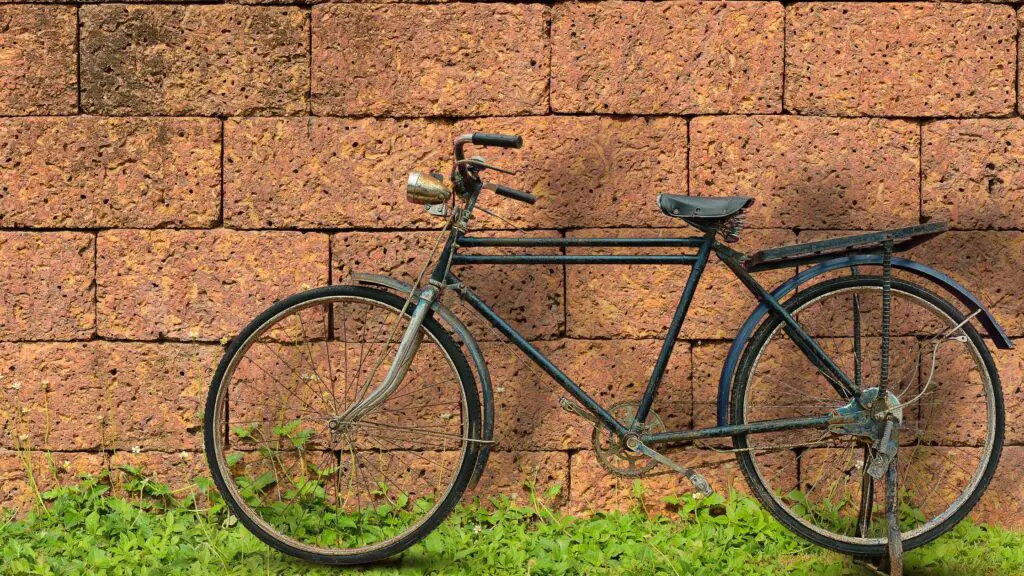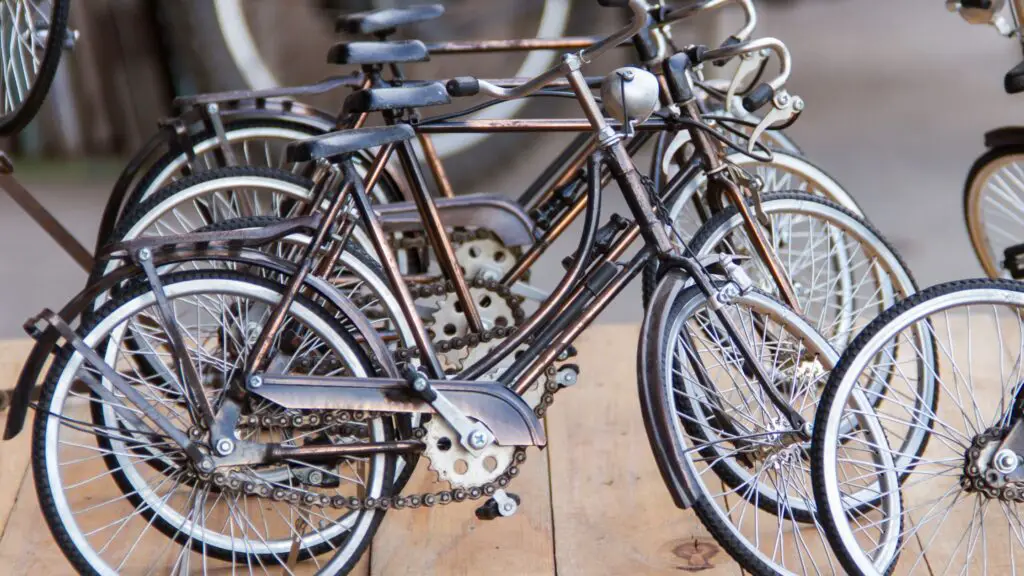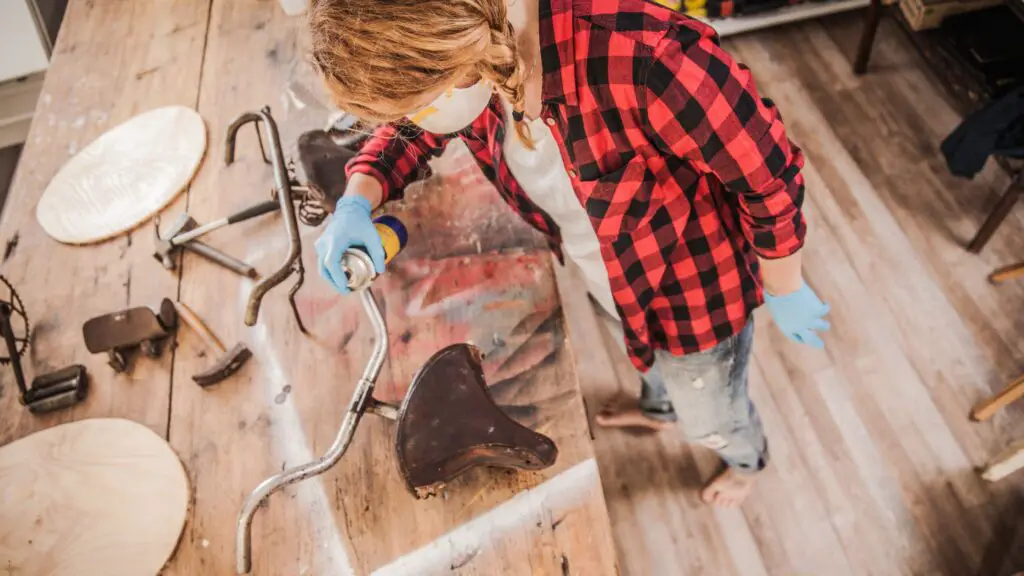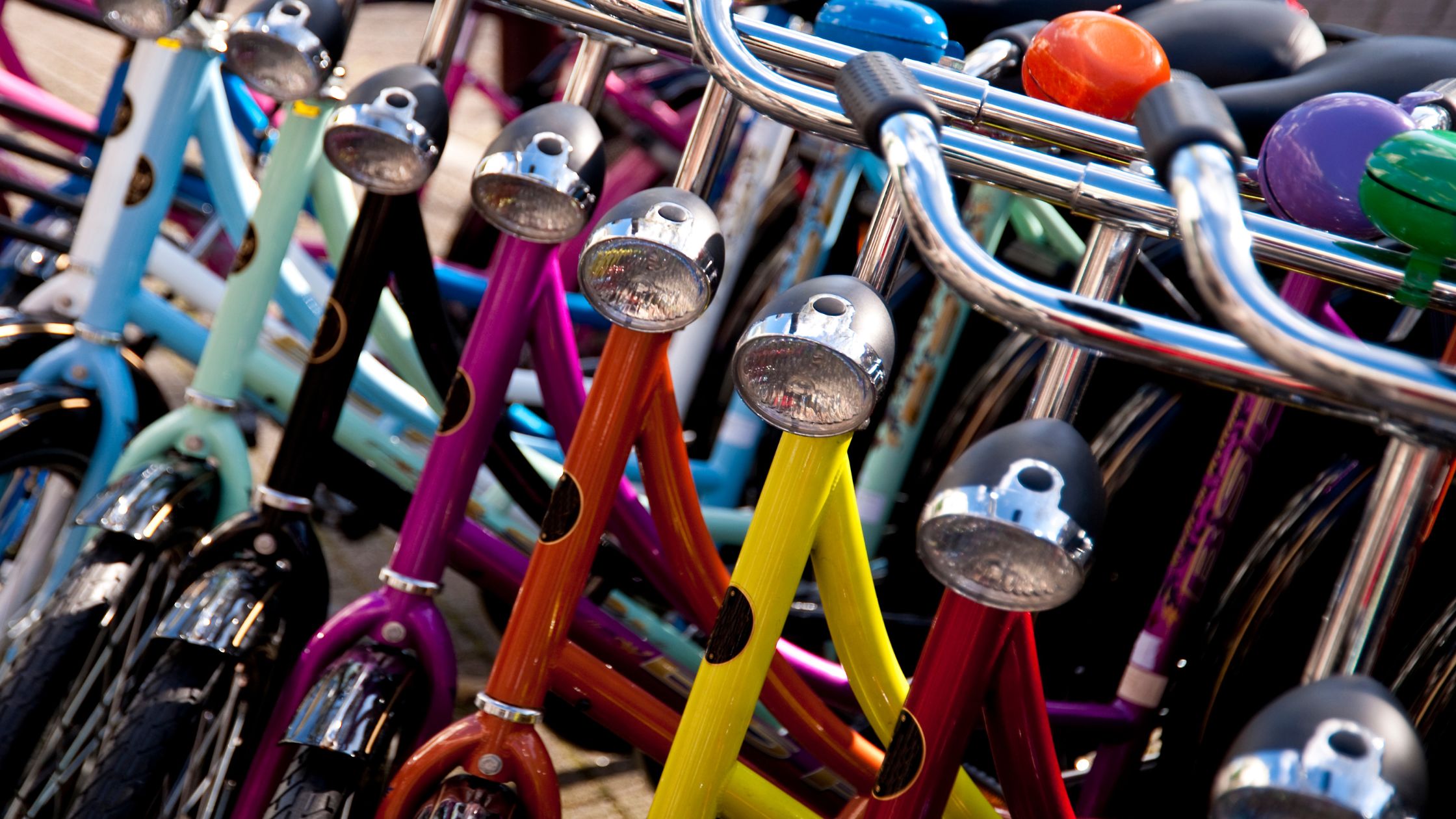Welcome to the enchanting world where wheels whisper tales of a bygone era—the realm of antique bicycles. These captivating relics, steeped in history and charm, hold an irresistible allure that transcends time. In the evolution of cycling, antique bicycles stand as revered symbols, tracing the lineage of innovation and design that has shaped modern biking. From the ornate craftsmanship to the simplicity of their mechanisms, these timeless marvels evoke nostalgia while embodying the spirit of adventure. Join us as we embark on a journey to unveil the captivating allure and profound significance of antique bicycles, exploring their place in cycling history and the enduring fascination they ignite.
History of Antique Bicycles

Origins and Evolution of Bicycles
The genesis of antique bicycles traces back to the early 19th century when inventive minds sought to create a human-powered vehicle, leading to the birth of the “running machine” or velocipede. Gradually, this evolved into the iconic penny-farthing, with its large front wheel and smaller rear wheel, symbolizing the pioneering days of cycling. These early bicycles were a testament to human ingenuity, marking a pivotal moment in transportation history.
Development of Antique Bicycles through Different Eras
Across eras, the evolution of antique bicycles showcased a remarkable diversity in design and functionality. From the elegant safety bicycle of the late 1800s to the streamlining innovations of the early 20th century, each era boasted its own distinctive models and technological advancements. The Art Nouveau-inspired designs of the 1910s, the sturdy cruiser bikes of the mid-20th century, and the sleek racing bicycles—all stand as testament to the evolving tastes and technological progress of their times.
Example: Consider the transition from the high-wheeled penny-farthing to the safety bicycle, which revolutionized comfort and safety for riders. The safety bicycle’s introduction of equally-sized wheels and the chain drive system set a precedent for future bicycle designs, marking a significant leap in functionality and accessibility.
Through these transitions and innovations, antique bicycles not only reflected the societal changes but also became treasured artifacts that embody the craftsmanship and spirit of each era. The evolution of these iconic machines remains an intriguing journey, offering a glimpse into the past while shaping the future of cycling technology.
By understanding the historical trajectory of antique bicycles, we gain a deeper appreciation for their timeless allure and the pivotal role they played in shaping the world of cycling as we know it today.
Characteristics and Features

Key Features Distinguishing Antique Bicycles from Modern Ones
Antique bicycles possess a distinct charm and unique characteristics that set them apart from their modern counterparts. One defining feature is their craftsmanship, often handcrafted with meticulous attention to detail—a stark contrast to the mass-produced nature of contemporary bikes. These vintage treasures exude an aura of authenticity, showcasing the artistry and individuality inherent in their construction.
Additionally, antique bicycles boast a design that reflects the era in which they were created. Their ornate frames, intricate details, and unconventional shapes stand in contrast to the standardized, streamlined appearance of today’s bicycles. Their distinctive features evoke a sense of nostalgia and admiration for the craftsmanship of yesteryears.
Craftsmanship, Materials, and Unique Design Elements
Crafted from materials like steel, wood, and sometimes even bamboo, antique bicycles showcase a craftsmanship that speaks volumes about the skilled artisans of the past. Ornamental head badges, elaborate lugs, and hand-carved embellishments adorned these bikes, turning each ride into a work of art.
Example: The filigree work on a Victorian-era bicycle frame or the hand-tooled leather saddle of an early 20th-century bike serve as testaments to the intricate craftsmanship and attention to detail prevalent in antique bicycles.
Moreover, the unique design elements, such as the gracefully curved handlebars, intricately designed chain guards, and distinctive wheel configurations, exemplify the innovation and creativity that defined each era’s cycling aesthetics. These elements not only add to the bikes’ visual appeal but also contribute to their functionality and historical significance.
Embracing the craftsmanship and design principles of the past, antique bicycles offer riders a tangible connection to history, allowing enthusiasts to immerse themselves in the rich legacy and artistry that continues to captivate hearts even in the modern age. Understanding and appreciating these distinctive characteristics elevate the allure of antique bicycles beyond mere artifacts—they are timeless masterpieces embodying the spirit of their era.
Popular Antique Bicycle Models

Notable Antique Bicycle Models Across Different Periods
Throughout the vibrant tapestry of cycling history, several iconic antique bicycle models have left an indelible mark, each representing a distinct epoch in the evolution of these two-wheeled wonders.
The High-Wheeler (Penny-Farthing): Symbolizing the early days of cycling, the high-wheeled penny-farthing, with its towering front wheel and smaller rear wheel, stands as an emblem of the daring spirit of exploration and innovation.
The Safety Bicycle: A revolutionary model introduced in the late 19th century, the safety bicycle with its equally-sized wheels and chain-driven mechanism revolutionized cycling, paving the way for more accessible and safer riding experiences.
The Columbia Model 45: A classic cruiser bicycle popular in the mid-20th century, known for its sturdy build and comfortable ride, became a staple for leisurely biking and family outings, leaving an enduring impact on recreational cycling.
Significance, Innovation, and Impact on Cycling History
Each of these antique bicycle models carried its own significance, contributing innovations that shaped the trajectory of cycling history. The high-wheeler, while daunting in its design, marked the early attempts at mechanized transportation and set the stage for subsequent innovations. Conversely, the safety bicycle’s introduction democratized cycling, making it accessible to a broader population and spurring a cycling craze worldwide.
Example: The safety bicycle’s impact was profound, especially in the emancipation of women, as it provided a more practical and safe means of transportation, facilitating greater mobility and independence.
Furthermore, models like the Columbia Model 45 catered to the evolving needs of cyclists, emphasizing comfort and reliability, influencing the design of modern leisure bikes. These antique bicycles weren’t just machines; they were cultural icons that reflected societal changes, technological advancements, and the evolving preferences of riders throughout history.
Understanding the significance of these models sheds light on their pivotal roles in transforming cycling from a novelty to a widely embraced mode of transportation and recreation. Their innovations laid the foundation for today’s biking culture and continue to inspire the design and functionality of modern bicycles, showcasing the enduring legacy of antique bicycles in shaping the cycling landscape.
Collecting and Restoring Antique Bicycles

Guide on Collecting Antique Bicycles
Finding and collecting antique bicycles can be an exhilarating journey into the past, often leading enthusiasts to various treasure troves where these historical gems await discovery. Antique bicycle aficionados frequent flea markets, garage sales, estate auctions, and specialized vintage bike shops to unearth these timeless relics. Online platforms and dedicated forums also serve as valuable resources for connecting with sellers and other collectors.
When evaluating an antique bicycle, factors such as its make, model, condition, and historical significance play pivotal roles in determining its value. Scrutinizing the bike’s authenticity, identifying any missing or replaced parts, and assessing its overall condition are crucial steps in gauging its worth.
Example: Discovering a well-preserved high-wheeler from the late 1800s at a local estate sale not only adds to one’s collection but also offers a tangible link to the past, fostering a deeper appreciation for cycling history.
Understanding the market trends and rarity of specific models can aid in making informed decisions when adding to or starting an antique bicycle collection.
Tips and Techniques for Restoring and Preserving Antique Bicycles
Restoring an antique bicycle requires patience, expertise, and a meticulous approach to retain its authenticity and historical value. Preservationists often use specialized techniques to refurbish these vintage treasures while maintaining their original character. Techniques like frame repairs, refinishing, and sourcing period-appropriate parts are essential in the restoration process.
Preserving the authenticity of an antique bicycle involves a delicate balance between restoration and conservation. Applying protective coatings, storing the bike in a controlled environment, and regular maintenance are crucial steps in ensuring its longevity.
Example: Restoring a 1920s cruiser bike involves sourcing authentic parts, replicating its original paint scheme, and meticulous attention to detail in recreating the bike’s vintage allure.
By embracing the art of collecting and restoring antique bicycles, enthusiasts not only breathe new life into these historical artifacts but also contribute to preserving a significant aspect of cycling heritage for future generations to cherish.
Riding Experience and Community

Personal Stories and Anecdotes of Riding Antique Bicycles
Riding an antique bicycle transcends the mere act of cycling; it’s a voyage through time, an immersive experience that connects riders with the essence of a bygone era. The sensation of gliding on a high-wheeler, feeling the wind against your face, or maneuvering a safety bicycle along cobbled streets evokes a sense of nostalgia, allowing riders to relive moments from history.
Example: Imagine navigating a bustling town square on a restored 1890s safety bicycle, eliciting curious glances and sparking conversations that bridge the gap between the past and the present.
These personal encounters with antique bicycles often form cherished memories, encapsulating the romance and adventure intertwined with these vintage rides.
Thriving Community of Antique Bicycle Enthusiasts and Events
Within the realm of antique bicycles thrives a passionate community of enthusiasts, united by their love for these historical marvels. From local meet-ups to international conventions, antique bicycle enthusiasts gather to celebrate their shared fascination for these two-wheeled relics. These gatherings offer a platform for showcasing prized collections, exchanging knowledge, and fostering camaraderie among like-minded individuals.
Events such as antique bicycle races, vintage cycling festivals, and exhibitions not only showcase the diversity of antique bicycles but also provide opportunities for enthusiasts to immerse themselves in the rich heritage and culture surrounding these timeless machines.
Example: Attending an antique bicycle rally not only allows participants to showcase their prized possessions but also fosters an atmosphere of camaraderie, where riders exchange stories, knowledge, and tips on collecting and restoring these historical treasures.
This thriving community not only sustains the passion for antique bicycles but also serves as a catalyst for preserving and promoting their legacy, ensuring that the allure of these timeless artifacts continues to captivate generations to come.
The Timeless Allure of Antique Bicycles

Enduring Charm and Nostalgia Associated with Antique Bicycles
The allure of antique bicycles extends far beyond their mechanical functionality; it resides in the intangible realm of nostalgia and enduring charm. These captivating relics evoke a sense of nostalgia, transporting riders to a bygone era where simplicity, elegance, and craftsmanship reigned supreme. The vintage aesthetics, intricate designs, and the echoes of history imbued within each spoke and frame evoke a wistful longing for times long past.
Example: Riding down a tree-lined path on a vintage cruiser bike, enveloped in the soft glow of a sunset, evokes a sense of nostalgia for a simpler era, a sentiment that transcends mere transportation.
The allure of antique bicycles lies in their ability to evoke emotions and spark imaginations, connecting riders with the romanticism of a bygone epoch.
Emotional Connection and Reasons Behind Continued Fascination
The continued fascination with antique bicycles is rooted in a deep emotional connection that transcends generations. These timeless machines represent more than just a means of transportation; they embody stories of innovation, craftsmanship, and the human spirit. They symbolize an era when bicycles were not only tools for travel but also cultural icons, shaping societal norms and fostering a sense of freedom and exploration.
Moreover, the enduring fascination with antique bicycles stems from their ability to bridge the past and present, allowing enthusiasts to experience history firsthand. The craftsmanship, attention to detail, and the stories embedded within each bicycle foster a profound appreciation for the heritage and craftsmanship of yesteryears.
Example: Restoring a 1930s vintage roadster bike and feeling the sense of accomplishment and connection to the craftsmanship and stories of the past.
The emotional resonance and the intrinsic value embedded in antique bicycles ensure that their allure remains timeless, continuing to captivate the hearts and minds of enthusiasts who cherish their historical significance and the emotions they evoke.
Maintenance and Care Tips

Essential Maintenance Tips for Antique Bicycles
Maintaining antique bicycles requires delicate care and attention to preserve their historical integrity and functionality. Here are essential maintenance tips to ensure these vintage treasures remain in optimal condition:
Regular Inspection: Conduct routine checks for rust, wear, and tear. Pay attention to critical components like the frame, wheels, spokes, and bearings.
Cleaning: Gently clean the bicycle using mild soap and water, avoiding harsh chemicals that could damage the original finish. Dry thoroughly to prevent rust.
Lubrication: Apply lubricants sparingly to movable parts, such as chains, bearings, and gears, to prevent corrosion and ensure smooth operation.
Storage: Store antique bicycles in a controlled environment, away from direct sunlight and moisture, to prevent deterioration.
Professional Maintenance: Seek expertise from experienced bicycle restorers or professionals for intricate repairs or restoration work.
Advice on Preserving These Historical Treasures
Preserving antique bicycles for future generations involves meticulous care and responsible stewardship to maintain their historical value. Consider the following advice:
Documentation: Keep detailed records, photographs, and historical documentation of the bicycle’s origin, model, and any notable features for future reference.
Conservation: Avoid making irreversible alterations or modifications that could diminish the bicycle’s historical authenticity.
Education: Share knowledge and stories about antique bicycles with future generations to instill a sense of appreciation and understanding for these historical artifacts.
Passing Down: Consider passing down the legacy of antique bicycles to responsible caretakers or enthusiasts who value their historical significance.
Example: Preserving a 1920s antique bicycle passed down through generations involves meticulous upkeep, documentation of its journey, and educating younger family members about its significance in family history.
By adhering to these maintenance tips and adopting responsible preservation practices, enthusiasts can ensure that antique bicycles endure as cherished heirlooms, preserving the essence of cycling history for generations to come.
Conclusion
In the vibrant tapestry of cycling history, antique bicycles stand as timeless relics, weaving tales of innovation, craftsmanship, and nostalgia. From the pioneering days of the high-wheeled penny-farthing to the accessible marvels of the safety bicycle and the cultural icons like the Columbia Model 45, each antique bicycle encapsulates an era’s essence and societal evolution. Their enduring appeal lies not just in their mechanical marvels but in the emotional connection and cultural significance they hold.
As we unveil the captivating allure of antique bicycles, we invite you to embark on a journey to explore, appreciate, and perhaps embrace this enchanting world. Dive into the thriving community of antique bicycle enthusiasts, where stories are shared, knowledge exchanged, and a profound love for these historical treasures unites individuals from diverse backgrounds. Whether you’re an avid collector, a passionate restorer, or simply someone intrigued by the charm of these vintage rides, there’s a place for you in this fascinating realm.
Embrace the magic of antique bicycles, connect with their rich heritage, and become a part of a community that celebrates history on two wheels!
Join the Conversation and Discover More
To delve deeper into the world of vintage treasures, explore our article on Antique TVs and unlock another chapter in the history of cherished artifacts that have shaped our lives.
Let’s ride into the past and preserve the legacy of antique bicycles together! Join the conversation, share your stories, and be a part of a community passionate about preserving history—one pedal stroke at a time.

Leave a Reply